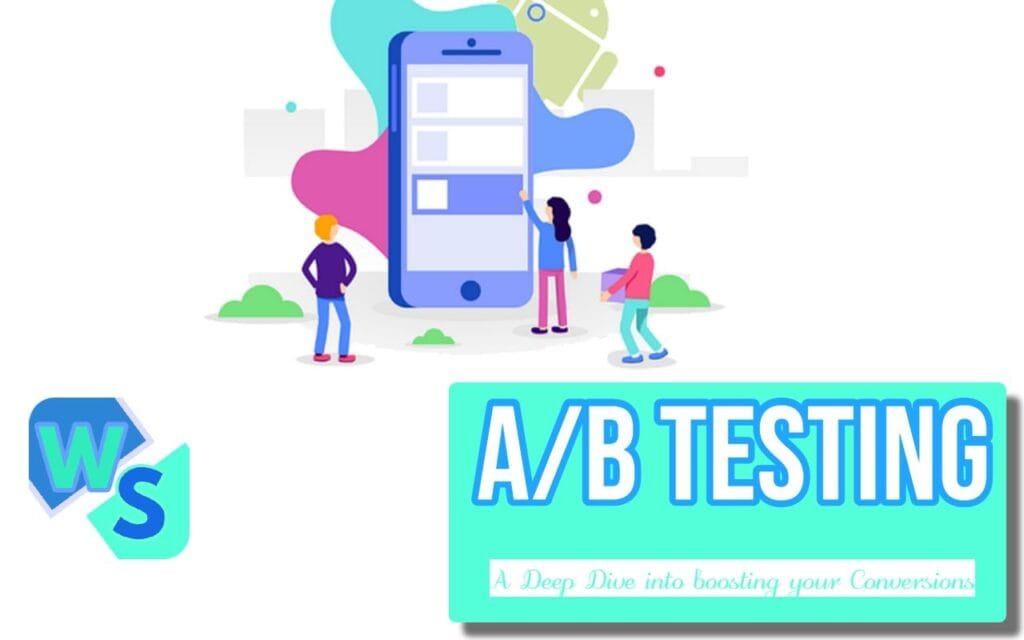Identifying the Ideal Audience
Why Knowing Your Target Matters
Nailing down the folks you’re trying to reach is at the heart of successful marketing. Knowing who you’re talking to lets you dive deep into their likes and dislikes, shaping your marketing swagger so it speaks directly to them. If you miss the mark here, you’re just shouting into the void, wasting time, energy, and cold hard cash.
By defining, digging into, and consistently checking in on your desired audience, you can roll out digital campaigns that hit the sweet spot, drawing in the crowd you want and keeping them hooked (Adobe).
Who is Who in Your Audience
Audiences aren’t a one-size-fits-all deal. You can slice and dice them based on various quirks like what they’re looking to buy, what they love to do, or even the funky little subcultures they belong to:
| Audience Flavor | Description |
|---|---|
| Buying Mood | Folks who are eyeing their next purchase or are already regulars. |
| Hobby Huddle | Groups clustering around shared pastimes or lifestyles. |
| Cultured Crew | Communities bonded by beliefs or cultural thingamajigs. |
| Demographics | Classified by the basics like age, gender, cash flow, and schooling. (Sprout Social) |
Getting a grip on these audience types means you can tailor your messages just right, serving what they want when they want it, and seeing those conversions soar. Curious about nailing those audience traits further? Dive into our piece on target audience demographics.
Strategies for Audience Identification
Finding the right crowd is like finding the right dance partner. Businesses can’t connect with their customers if they don’t know who they are. Here, you’ve got two main tactics: doing some nosy probing through market research and spying on competitors, and imagining models of that dream customer with fancy personas.
Market Research and Competitor Analysis
Digging deep into market research is like having a magnifying glass for the target crowd. It’s all about checking out what’s hot, what’s not, and where your business can swoop in for a big win.
Using all kinds of nosey tools like surveys or even just eavesdropping on social media chats can paint a pretty clear picture of what your peeps are buzzing about. Here’s a nifty little cheat sheet:
| Research Method | Goal | Tools/Techniques |
|---|---|---|
| Surveys | Grab numbers on what people want | Google Forms, SurveyMonkey |
| Focus Groups | Dig for deep thoughts and feelings | In-person or virtual chats |
| Social Media Listening | Eavesdrop on what folks are saying | Hootsuite, Brandwatch |
| Online Forums | Peek into hubbubs that matter | Reddit, Quora |
Also, you gotta keep an eye on the other guys—the competition. See what they’re doing right and where they’re missing beats. By stealing (ahem, learning) their tricks, you’ll avoid bum notes and speak the right tune to your peeps (Adobe).
Creating Target Audience Personas
Cooking up audience personas is like creating a dream customer recipe. They’re pretend people who reflect real ones using juicy data on how they live, think, and shop.
Here’s what you need for a winning persona:
- Demographics: What they mark down on forms like age, gender, and zip code.
- Psychographics: What makes ’em tick, like hobbies and moral codes.
Here’s a quick look at what one could look like:
| Persona Name | Age | Gender | Location | Interests | Pain Points |
|---|---|---|---|---|---|
| Eco-Friendly Emma | 29 | Female | Urban Area | Saving the Planet, Fashion | Not enough green choices |
| Tech-Savvy Tom | 35 | Male | Suburban Area | Gizmos, Gaming | Budget-busting tech toys |
Nailing down these personas is like turning marketing into a conversation, making sure promotions hit close to home and draw folks in for the long haul (Adobe).
By mastering the art of knowing exactly who you’re speaking to, businesses not only draw in the right crowd but keep ’em coming back for more good stuff. If you’re itching for more juicy details, check out target audience segmentation and target audience demographics for some extra golden nuggets.
Understanding Target Audience Psychographics
Psychographics are like a secret map to your customers’ minds. They show us what people really care about, their dreams, needs, and beliefs—not just their age or where they live. It’s a bit like getting the inside scoop on what makes your audience tick.
Motivations and Needs
Why do customers do what they do? Unraveling this mystery helps businesses create messages that hit home. It’s like having a magic decoder ring for your audience’s shopping habits. Here’s a peek:
| Motivation Type | Description |
|---|---|
| Achievement | Chasing goals and wanting to boost their game in life or work. |
| Connection | Craving to hang out and feel part of something bigger. |
| Security | Seeking a comfy, safe corner in finances and life. |
| Self-expression | Showing off their unique style by their choices and buys. |
| Convenience | Looking for things that make life easier and give them more time to relax. |
By getting a handle on these motivations, businesses can send out marketing messages that actually vibe with what folks want and need. It’s like finding the key to their hearts and wallets—understanding what hooks them helps companies speak their language.
Values and Beliefs
Values and beliefs are like the compass guiding people’s decisions. They tell us what people hold dear, affecting how they view brands and who they stick with. Let’s dig into this:
| Value Type | Description |
|---|---|
| Environmental sustainability | Giving thumbs-up to brands that love the Earth as much as they do. |
| Social responsibility | Applauding companies that play fair and help the community. |
| Innovation | Getting excited about the latest and greatest tech and ideas. |
| Quality | Going for the good stuff over the cheap stuff. |
| Tradition | Keeping the old ways alive and cherished, because it’s all about roots and family ties. |
Having the lowdown on these values makes branding and messaging more personal. This connection becomes the glue for sticking with a brand long-term. Pairing audience demographics with psychographics gives a 360-degree view so companies can fine-tune their story and materials.
Grasping psychographics helps businesses bond with their crowd on a deeper level, crafting a brand experience that truly resonates. For more on getting to know your audience better, check out understanding your target audience.
Engaging with the Right People
Getting the attention of the right folks is vital for cooking up juicy marketing plans. This part dives into ways to gather nuggets of info and build genuine ties with them.
Data Collection Tricks
Knowing the crowd is like having a secret recipe—tailor those strategies to fit like a glove. Here’s how to get the 411:
- Chit-Chat with Customers: Forget scripts! Have real talk with folks to discover what floats their boat (Hotjar).
- Surveys: Get some numbers in by asking people what’s what! Figure out their likes, dislikes, and lives.
- Focus Groups: Gather a mix, stir in some questions, and let it simmer for rich insights.
- Team Up Brainstorms: Get your team together, throw ideas around, and see what sticks!
| Data Collection Trick | What It Does |
|---|---|
| Chat Sessions | Hear it straight from the horse’s mouth |
| Surveys | Direct, number-crunching questions |
| Focus Groups | Group gabfest on feelings and thoughts |
| Team Huddles | Ideas bouncing around the office |
Mixing these methods gives you the scoop on what makes your crowd tick.
Making Real Connections
Crafting genuine bonds is the name of the game. When folks feel the love, they stick around. Here’s how you can get there:
- Read Minds: Peek into what people care about. If you know their values and dreams, your message hits home (Sprout Social).
- Personal Touch: Make it all about them! Use the info about their habits to create messages that feel made just for them (Adobe).
- Solve Their Problems: Show them you get what bugs them and you’re here with the answers (Mock The Agency).
- Boost Their Identity: Get into their tribe. When your brand jives with who they are, loyalty blooms (OnFulfillment).
Pull these tricks out of your hat to keep your audience hanging on your every word and paving the way for killer marketing success. Looking for more juicy info? Check out target audience analysis and target audience segmentation.
Addressing Target Audience Pain Points
Importance of Identifying Pain Points
Grasping what bugs your audience is key to creating winning marketing strategies. Think of pain points as those pesky problems or challenges folks face. Getting a handle on these lets businesses whip up marketing magic that speaks directly to their customers’ needs. By tackling these issues head-on, businesses can dish out solutions that build loyalty and trust among their fans.
Take Uber, for instance. They saw that the taxi trade was a headache with long waits and few payment options. So they launched an app letting people hail rides from nearby drivers, shaking up the ride game in a big way. By diving into those pain points, they dialed into what their users really wanted.
Serving up content that talks about these hassles can pull in new customers and hold on to the ones you’ve got, making it a no-brainer in keeping your audience engaged.
Strategies for Uncovering Pain Points
Here are some clever ways to sniff out your audience’s pain points and sharpen up your marketing moves:
| Strategy | Description |
|---|---|
| Tuning Into Market Research | Dive into surveys, focus groups, and chinwags to spot recurring issues everyone seems to face. |
| Digging Through Customer Feedback | Take a peek at reviews and testimonials; they’ll spill the beans on what’s rubbing people the wrong way. |
| Chilling on Social Media | Mix it up on Twitter, Facebook, and Insta to see what’s nibbling at your crowd’s nerves. |
| Peeking at Competitors | Size up competitors to sniff out service gaps and snag opportunities for improvement. |
| Crafting Buyer Personas | Cook up profiles based on customer chats and data to really get your finger on what different folks need. |
| Leaning on Data Analytics | Study web traffic and user antics online; it’s a goldmine of insights into what customers crave. |
Keep an ear to the ground because these issues aren’t set in stone. Brands have to stay on their toes and adapt to what their audience needs to stay seen as the go-to problem-solver. For more ways on nailing audience understanding, check out our article on target audience analysis.
Using Psychographic Traits
Psychographic traits give us a peek into minds, hearts, and souls of target audiences, doing a lot more than just counting heads. It helps marketing honchos, CEOs, and business owners shape their people profiles with a mix of arts and smarts.
Personality Traits and Lifestyles
To get a bead on folks who might open their wallets for you, understanding how they tick is key. From whether they’re a daydreamer or a go-getter to the stuff they fill their lives with, it’s these little bits that guide their buying habits.
Here are five biggies when it comes to psychographic traits:
| Characteristic | What It Means |
|---|---|
| Personality | The quirks and traits that drive how a person acts and reacts. |
| Lifestyles | Daily doings and the way folks choose to live. |
| Interests | The fun stuff that people choose to spend their time on. |
| Opinions | What people believe about brands and the world around them. |
| Values | The principles that steer decision-making. |
Getting these details right lets brands strike a chord with their folks on a deeper level. When brands sing the same tune as their audience, they’re bound to hit a high note together.
Buyer Behavior Insights
Getting the psyche-side of consumers uncloaks what really makes them tick, which is why it’s a cornerstone for solid marketing plays. By sifting through this data, brands can see why some products fly off the shelves while others gather dust.
Psychographic data often includes:
- Spending Habits: Understanding who splurges and who scrimps can help decide if a brand should go luxury or low-cost.
- Hobbies and Interests: Knowing what folks love doing for fun fuels better product ideas and marketing spins.
- Opinions on Brands: Figuring how people feel about the competition or market trends can sharpen brand image and position.
- Goals and Aspirations: Tuning into what people are aiming for lets brands pitch products that fit into those dreams (HubSpot).
Using these insights, companies can fine-tune their marketing mojo to meet the crowd’s yearnings, boosting brand loyalty. For more scoop on understanding consumer vibes, check out our write-up on target audience segmentation.
Emotional Brand Connection
Role of Emotions in Brand Preference
Connecting on an emotional level isn’t just a nice-to-have—it’s the peanut butter to the jelly sandwich of brand preference. When companies figure out how to yank on those heartstrings, they’re not just selling products; they’re winning over lifelong fans. Studies tell us people are swayed more by emotions when buying stuff than by bland spreadsheets (OnFulfillment). To paint you a picture, a giant study of 1,400 ads over three decades showed that campaigns with an emotional punch had folks on board 31% of the time, while rational appeals limped across the line at 16%.
Brands that manage to bottle those warm and fuzzy feelings end up creating a magnetic pull. Things like belonging, identity, and a trip down nostalgia lane are the magic potion. Big brands often flash values or personas that sync up with people’s vibes, making them household favorites (OnFulfillment). By dialling into what makes folks tick emotionally, brands weave tighter bonds.
Building Brand Loyalty through Emotional Connections
If you’re aiming to keep your customers coming back like homing pigeons, you gotta grow those emotional roots. Brands that spill their hearts out and match their promises to their actions build loyalty that cash can’t buy.
Handing out well-loved goodies in promos can unlock engagement and sprinkle some trust dust all around. Such moves often bloom into robust relationships, all tied up by emotional cords (OnFulfillment). Shining a light on emotional perks in marketing paints a picture of deep connections consumers want with brands. Knowing these dynamics tweaks a business’s [target audience persona development] game, helping them tune into the emotional playlists of their buyers.
| Emotional Connection Strategy | Impact on Brand Loyalty |
|---|---|
| Telling stories in marketing | Makes things relatable and tugs at emotions |
| Building communities | Fosters belonging |
| Aligning values with consumers | Builds rock-solid trust and faithfulness |
| Keeping emotional messaging steady | Cements the brand’s personality |
When brands lean into what makes customers feel something, they’re not just setting the stage for brand love—they’re setting the table for loyalty feasts, vital for business success that’s here to stay.
Target Audience Analysis and Development
Figuring out the nitty-gritty between a target audience and a target market is a bit like deciding between pizza toppings—not everyone loves anchovies. A target audience is like the VIP section of your broader target market, grouped into specifics like age, where they live, bucks they make, their jobs, and how they identify themselves. This laser-sharp focus helps in crafting messages that hit home. Meanwhile, the target market includes everyone who might be interested in a brand, product, or service, like your grandma down to the kid selling lemonade.
Furthermore, businesses can have more than one target audience if they’re juggling several projects. Take a fancy men’s running shoe, for example—it wouldn’t just target athletes; there could be different angles for retail buyers versus sneaker shops. How wide or narrow the target audience goes can change depending on the type of campaign you’re cooking up and the data on hand.
Steps in Target Audience Analysis
Figuring out your target audience isn’t just about throwing spaghetti at the wall to see what sticks. It’s about using a well-rehearsed recipe to zero in on who the perfect customers are. This strategic sleuthing forms the foundation for killer marketing campaigns and the kind of content that leaves your audience coming back for seconds.
| Step | Description |
|---|---|
| 1. Analyze Existing Customers | Check out who’s already buying what you’re selling. Find out what makes them tick—their likes, dislikes, and buying habits. |
| 2. Engage on Social Media | Listen in on what’s happening across social media. Tune into trending topics and what folks are chatting about. |
| 3. Conduct Surveys and Interviews | Gather direct feedback by asking your audience what they want, straight from the horse’s mouth. |
| 4. Observe Market Trends | Keep an eye on what’s buzzing in the industry that might sway how customers shop. |
| 5. Utilize Analytics Tools | Dive into website and social media stats to dig up more about audience behaviors. |
| 6. Define Buyer Personas | Create detailed sketches of your ideal customers based on what you’ve learned, beefing up your targeting strategy. |
These steps are a roadmap to nail down who your real audience is, letting you personalize marketing like it’s meant for them and only them. When you hit the sweet spot, your marketing campaign’s punch packs a wallop—71% of folks expect content to feel like it was cooked up just for them, and around 76% throw their hands up when it doesn’t quite meet the mark. For some more juicy details on audience definitions, check out the definition of a target audience.





















